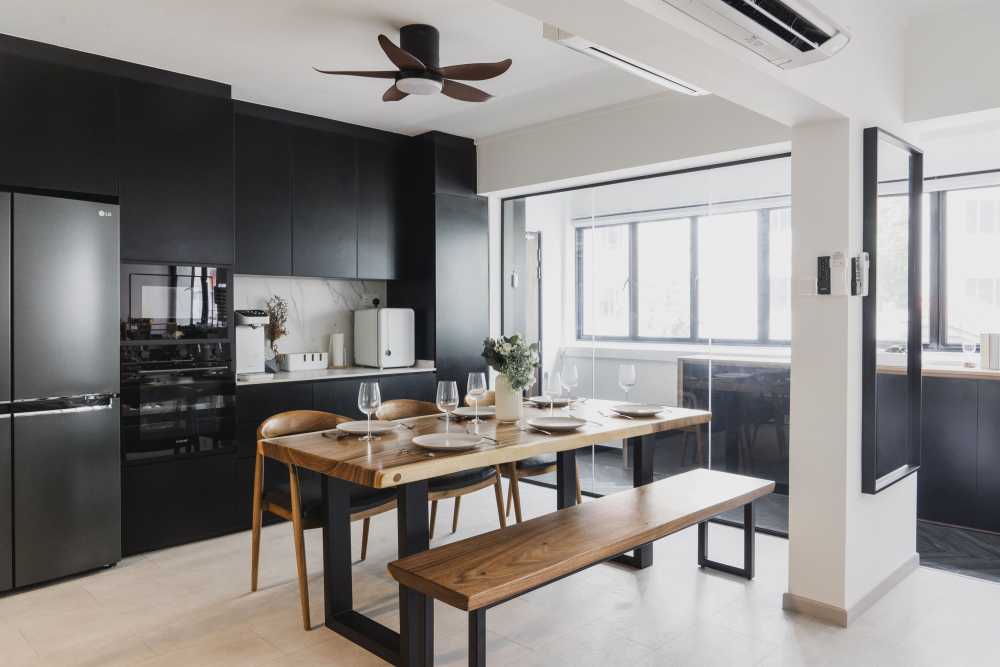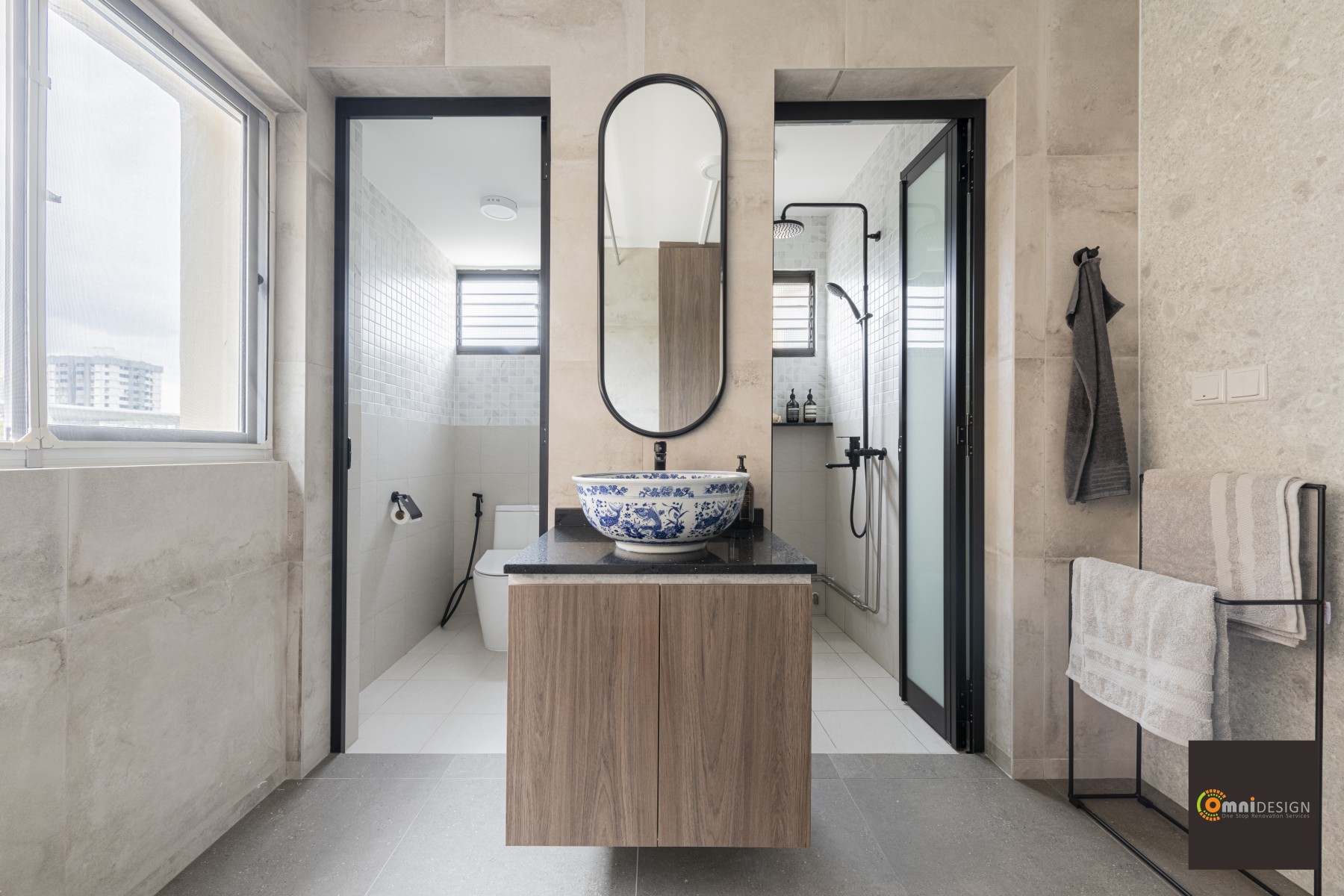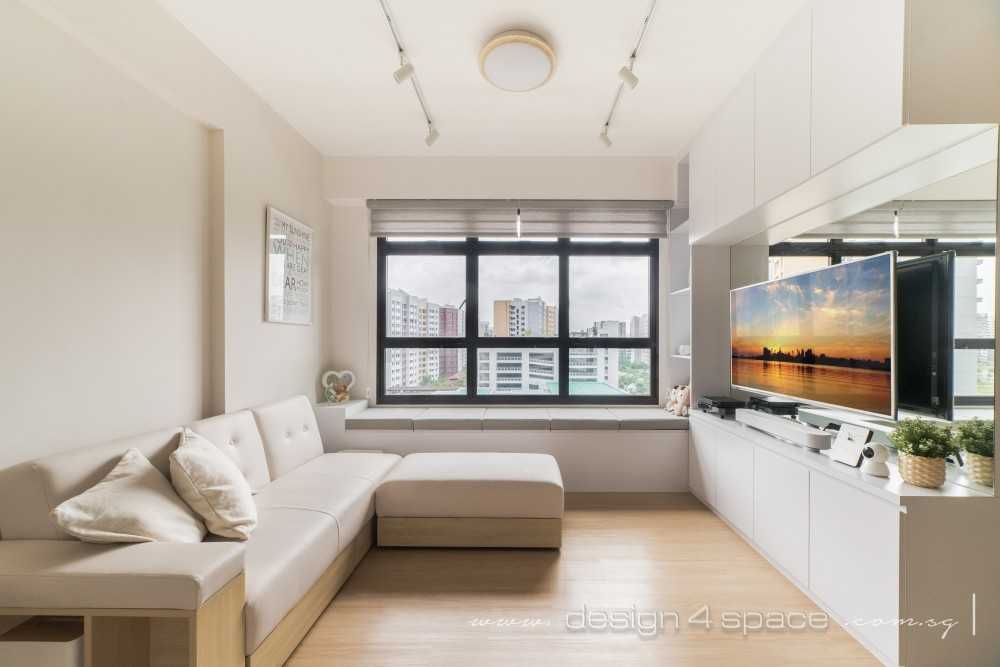How To Make Your Home More Eco-Friendly & Sustainable
In today’s world, it’s becoming increasingly important to make sustainable choices to protect our environment.
One way to do this? Make your home more eco-friendly!
This doesn’t just benefit the planet – it also saves you money in the long run.
In this guide, we’ll cover some tips on how to make your home more eco-friendly and sustainable in Singapore.
Here’s a quick summary of what we’ll cover:
- Reducing energy consumption
- Conserving water
Reducing Energy Consumption
Energy usage is one of the biggest contributors to climate change.
By reducing your energy consumption, you can help decrease your carbon footprint. Here are some tips to reduce your energy usage:
- Using LED lights instead of traditional lights
- Using natural light and ventilation
- Turning off your appliances when not in use
- Choosing energy-efficient appliances
Using LED lights
First, one great way in which you can reduce your energy consumption is by using LED lights.
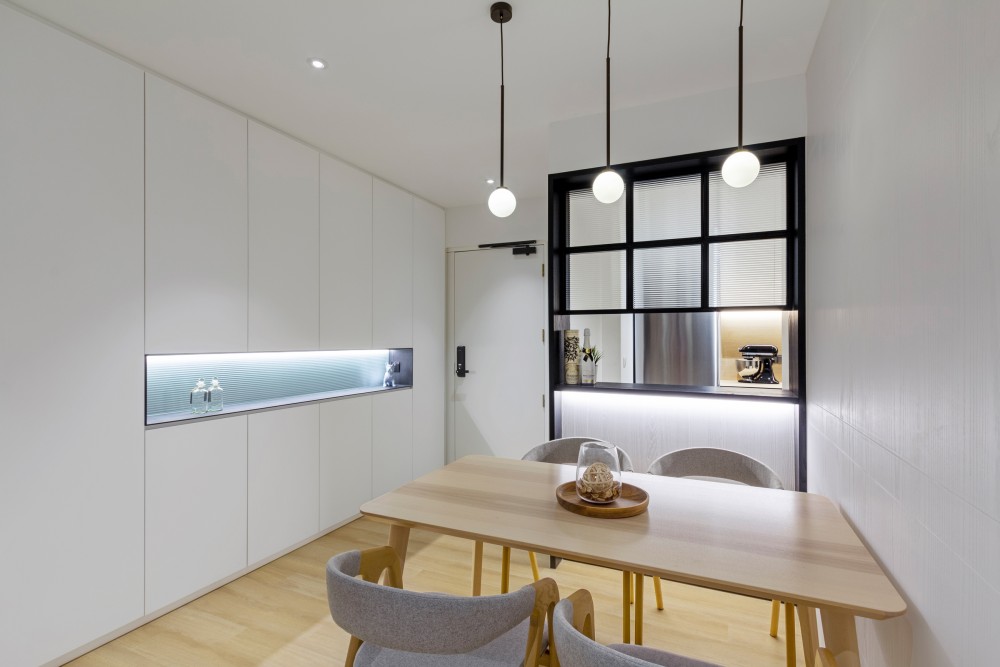

58 Havelock Road ($49,000) by Livspace
LED lights = Light Emitting Diode lights, and these are a type of energy-efficient lighting that use less electricity than traditional incandescent or fluorescent bulbs.
LED lights have a longer lifespan, produce less heat, and are more durable than other types of bulbs.
To be specific, LED lights can last up to 25 times longer than traditional incandescent bulbs, reducing the frequency of bulb replacements.
And in terms of energy efficiency, LED lights use up to 90% less energy than traditional bulbs, resulting in significant energy savings.
Basically, you get to save the environment and save money at the same time. Doesn’t that sound like a win-win?
If you’re wondering how to choose LED lights, here are a few things to consider:
- Lumens: Lumens are the measure of the brightness of the bulb. Choose a bulb with the appropriate number of lumens for the space you want to light.
- Colour Temperature: colour temperature refers to the hue of the light produced by the bulb. Choose a colour temperature that suits your needs.
- Dimming: Some LED lights are compatible with dimmer switches, while others are not. Make sure to choose a bulb that is compatible with your dimmer switch if you plan to dim the lights.
- Size and shape: LED lights come in different sizes and shapes, so make sure to choose a bulb that fits your fixture.
- Quality: Choose a reputable brand with good customer reviews to ensure you’re getting a high-quality LED light.
Installing LED lights is easy and straightforward: simply replace your old bulbs with LED bulbs that fit your fixture.
Using natural light and ventilation
While LED lights are a better choice compared to traditional lights, there’s another option that’s even more eco-friendly… and that’s to rely on natural light and ventilation!
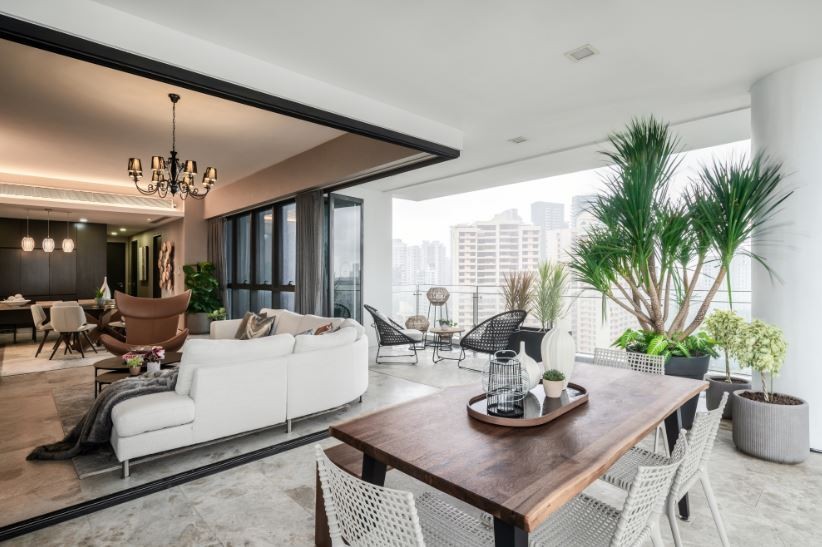

100 Kim Seng Road, Singapore ($70,000) by Weiken.com Design Pte Ltd
Obviously, natural light doesn’t require any energy consumption – this lets you cut down on your carbon footprint.
That said, getting in more natural light has other benefits as well. For example, exposure to natural light has been linked to improved mood, productivity, and sleep quality.
Let’s unpack this a little:
Firstly, researchers have found that exposure to natural light has been linked to improved mood and reduced symptoms of depression.
How does it work? Natural light increases the production of serotonin, a hormone that regulates mood and helps to promote feelings of well-being. Studies have shown that people who are exposed to natural light on a regular basis have lower levels of stress and anxiety, and report feeling more positive and energized.
On top of that, increased natural light has also been linked to improved productivity in the workplace.
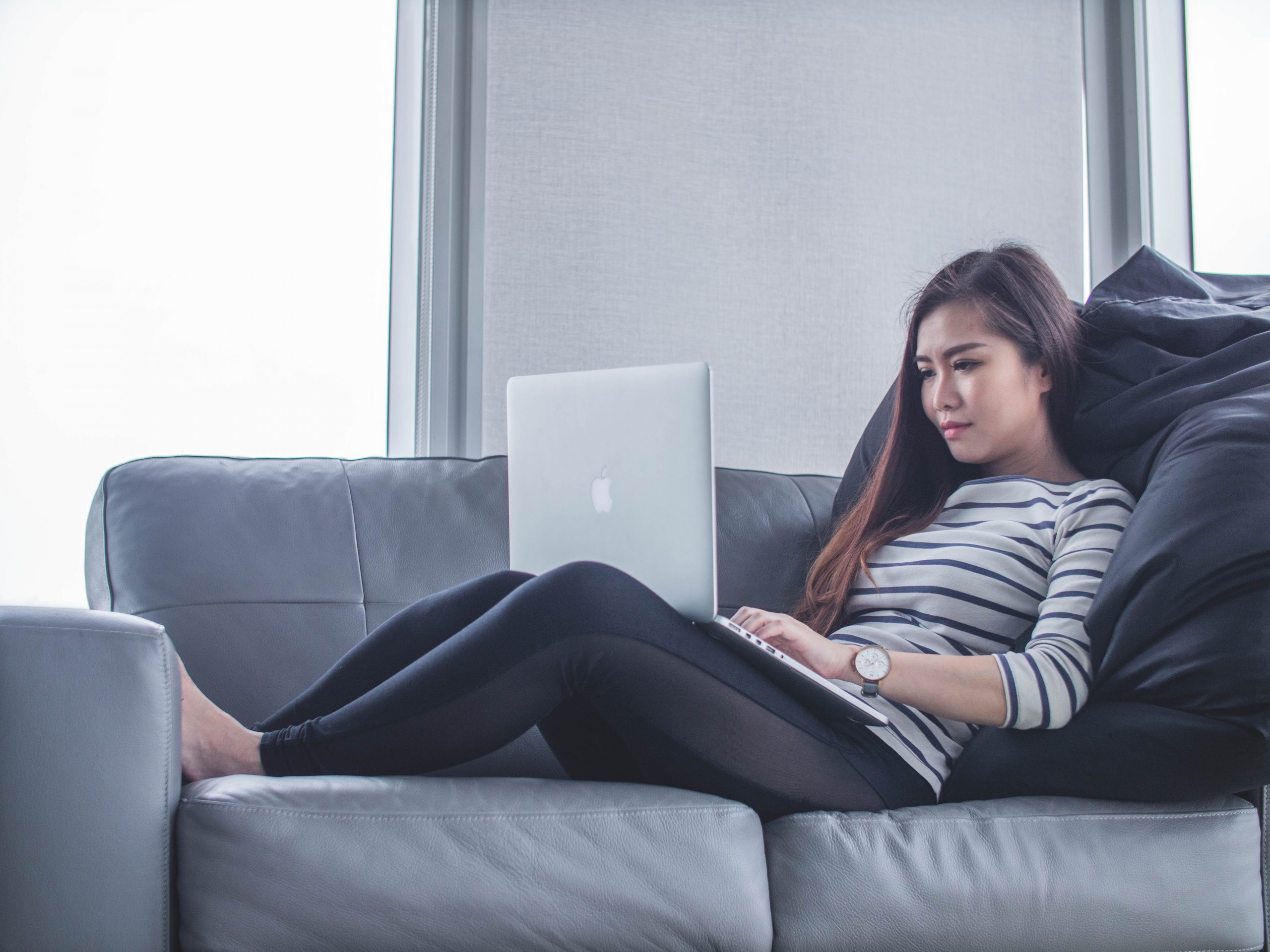

Studies have found that workers who are exposed to natural light throughout the day are more productive, and make fewer mistakes than those who work in artificial lighting.
It’s said that natural light can help to regulate the body’s circadian rhythm, which can improve alertness, focus, and cognitive function.
Finally, exposure to natural light can also help to regulate the body’s internal clock, which can improve sleep quality.
Like we just discussed, the body’s circadian rhythm is influenced by natural light, and exposure to natural light during the day can help to regulate this internal clock. This can lead to better sleep quality, improved sleep duration, and reduced symptoms of sleep disorders.
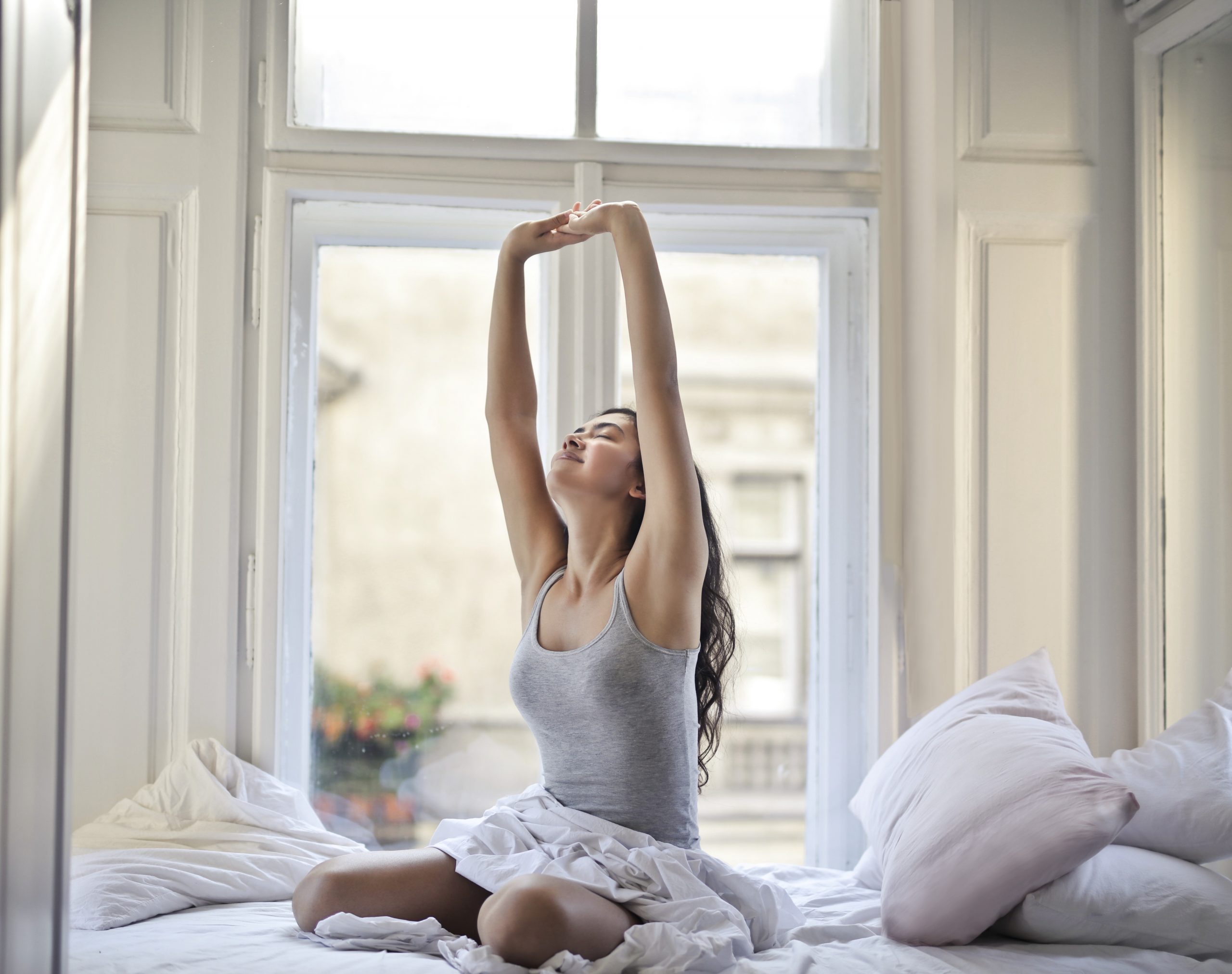

In order to maximise natural light in your home, here are a few tips:
- Use light-coloured paint: Light-coloured walls reflect natural light, making your space feel brighter and more open.
- Use reflective surfaces: Reflective surfaces such as mirrors, glass, and metallic finishes can help to bounce natural light around your space.
- Use sheer curtains: Sheer curtains can help to filter natural light into your home while also maintaining privacy.
Natural light aside, natural ventilation is also the way to go – you’ll reduce your energy usage significantly if you rely on natural ventilation instead of using air-conditioning.
We know this might not be always possible here in Singapore, where it’s often hot and humid. That said, here are some tips to maximise natural ventilation in your home:
- When buying a home (assuming you’re buying resale!), pay attention to the position of the unit and whether there’s good ventilation in the unit. If that’s the case, you might be able to get away with using fans and natural ventilation rather than having your AC on throughout the day.
- Again, when buying a home, look for units where cross-ventilation is possible (ie there are openings – either doors or windows – on opposite sides of the home or room). If this is the case, there’s a higher chance of good air circulation and air flow, meaning your home will be more breezy.
- Install ceiling fans to circulate air around your space and create a cooling effect.
- Block and diffuse the amount of heat coming into your home by using curtains and blinds. Between curtains and blinds, curtains are typically made of thicker, heavier materials that can provide better insulation and light-blocking capabilities. On the other hand, blinds are typically made of lighter, more flexible materials that can be adjusted to control the amount of light and heat that enters your home.
- In addition to curtains and blinds, there are also window films that you can apply to your windows to reduce heat and glare. These films are typically made of a thin, transparent material that is designed to block up to 99% of UV rays and reduce the amount of heat that enters your home. Window films are generally easy to install and can be a cost-effective way to reduce heat and energy costs.
Turning off your appliances when not in use
This is the one thing that we all know we’re supposed to do, but find it hard to do anyway.
We feel you – it can be tough to remember to turn off your appliances, or maybe you just can’t be bothered.
Here are two tips to help you to remember (or to make the process easier):
- Use smart power strips: Smart power strips are designed to automatically turn off power to devices that are in standby mode or not in use. This can be a convenient way to save energy without having to manually unplug your devices.
- Use timers: Timers can be used to automatically turn off devices after a certain period of time. This can be especially useful for devices that you tend to forget to turn off, such as lamps or fans.
Choosing energy-efficient appliances
Finally, choosing energy-efficient appliances is a great way of making your home more environmentally friendly.
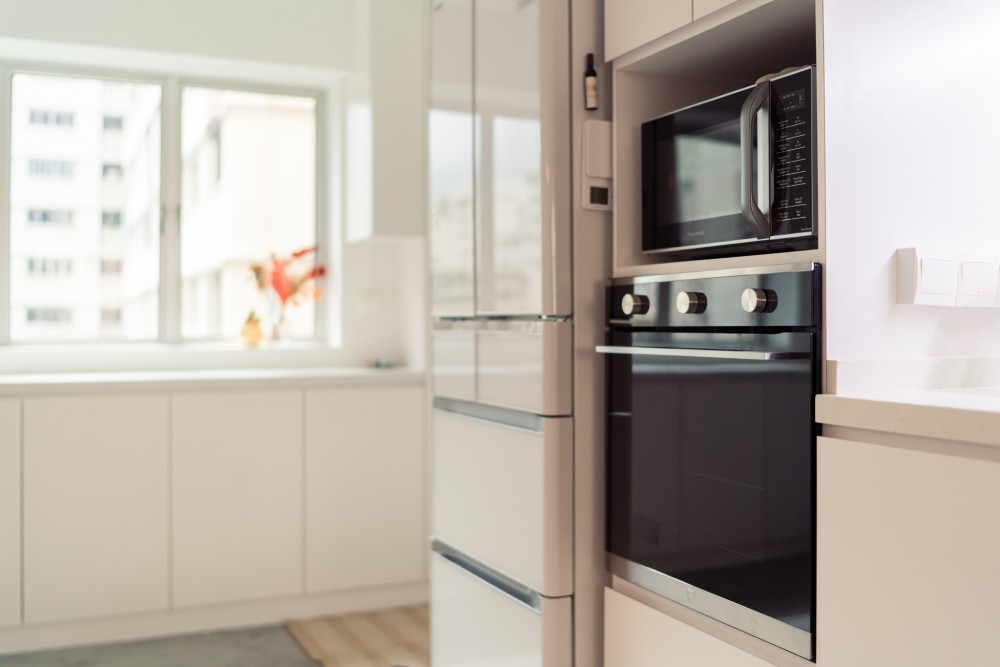

Pasir Ris Street 72 ($47,888) by Place To Relax
You can find energy-efficient versions of pretty much any appliance, including refrigerators, air conditioners, washing machines, dryers, and dishwashers.
When choosing energy-efficient appliances, here are some factors to consider:
- Look for the Singapore Energy Label: The Singapore Energy Label rates appliances from one to five ticks, with more ticks indicating higher energy efficiency. Look for appliances with more ticks to save energy and money.
- Size and capacity: Choose the appropriate size and capacity of the appliance for your needs. Larger appliances tend to use more energy, so choose a size that meets your needs without wasting energy. If you just live with your partner and don’t have any kids, for example, you probably don’t need a 14kg capacity washing machine.
- Features: Look for appliances with energy-saving features such as auto shut-off, sleep mode, and programmable settings. These features can help you save energy without compromising convenience or performance.
- Maintenance requirements: Choose appliances that are easy to maintain and repair. Appliances that require frequent repairs or maintenance can use more energy and be less cost-effective over time.
- Cost: Consider the upfront cost of the appliance as well as its long-term cost. Energy-efficient appliances may cost more upfront, but they can save you money on your electricity bill over time.
Conserving Water
Water is a precious resource – especially here in Singapore.
As we rely on water imports, it’s all the more important to be mindful of our usage. Here are some tips to conserve water:
- Install low-flow showerheads and faucets
- Go without the rain shower
- Use a dishwasher and washing machine only when full
- Consider installing a water-efficient toilet
Install low-flow showerheads and taps
Low-flow showerheads and taps are showerheads and taps that use less water without sacrificing water pressure.
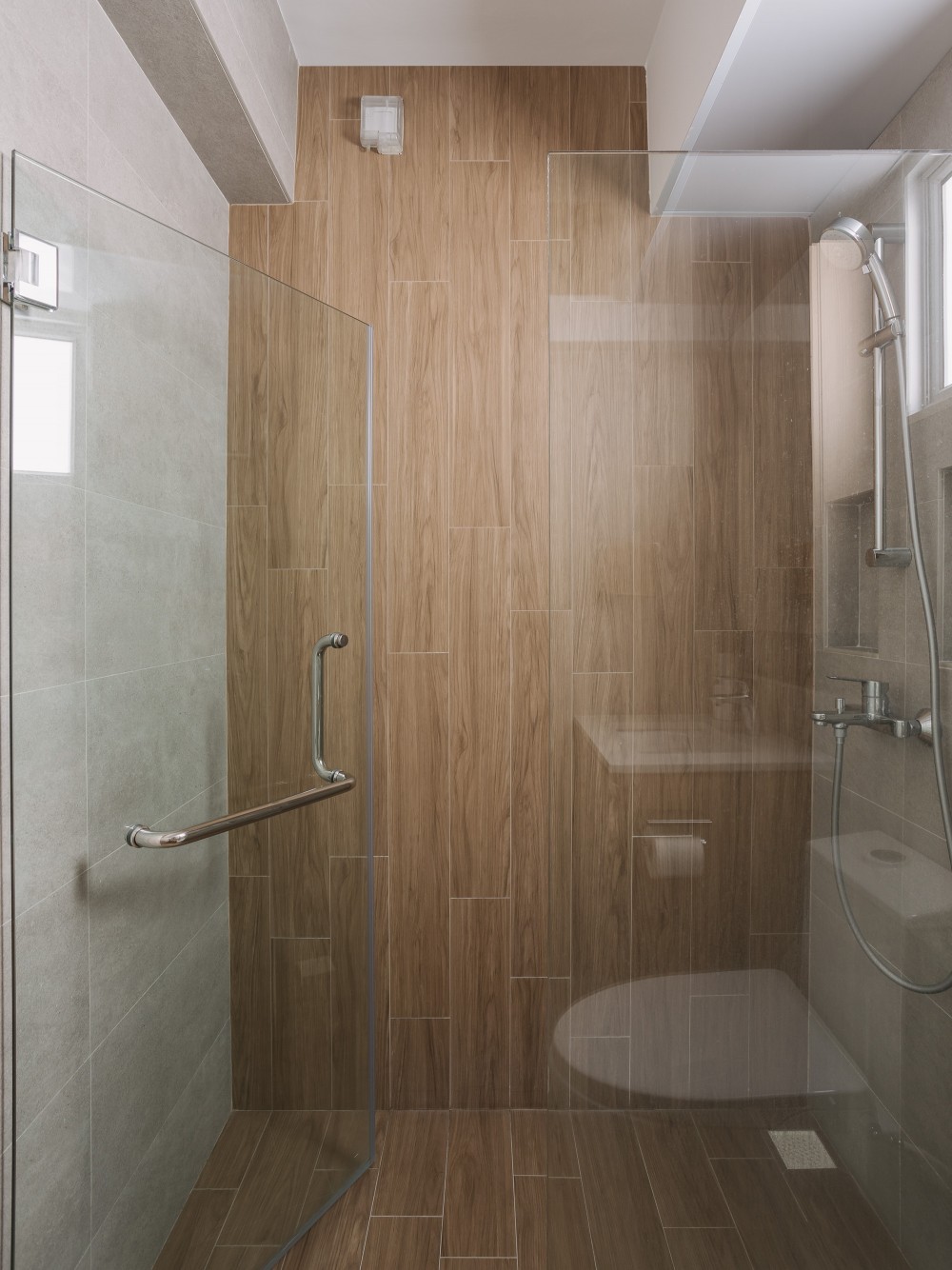

528C Costa Ris ($51,000) by The Interior Lab Pte Ltd
Basically, these restrict the amount of water that flows out.
They work by using a variety of technologies, such as aerating the water or using pressure chambers, to create a satisfying shower experience while using less water.
In comparing a low-flow showerhead vs a normal showerhead:
A standard showerhead can use up to 10 litres of water per minute, while a low-flow showerhead typically uses 5 litres or less per minute. This can result in significant water savings over time, which can help reduce your monthly water bills.
In addition to saving water, low-flow showerheads and taps can also help to reduce the energy used to heat the water. By using less hot water, you’ll save on the energy needed to heat the water, reducing your electricity bill and lowering your carbon footprint.
When choosing a low-flow showerhead or taps, look for products with the Water Efficiency Labelling Scheme (WELS) label in Singapore. WELS is a labeling system that rates the water efficiency of products, with a higher rating indicating greater efficiency.
Go without the rain shower
This one goes without saying – while rain showers are trendy, they use a ton of water.
In fact, rain showerheads typically use up to 100% more water as compared to a standard showerhead, per minute.
If your shower lasts for 10 minutes, we’re looking at 95 litres of water used in a normal shower, vs 190 litres of water used in a rain shower.
And if your shower lasts for 20 minutes, that’s 190 litres of water used in a normal shower, vs 380 litres of water used in a rain shower.
Bottom line? If you can do without the rain shower, it’ll help save the polar bears – and reduce your water bill as well.
Use a dishwasher and washing machine only when full
This one’s pretty self-explanatory – when you run your appliances such as your dishwasher and washing machine only when they’re full, this saves water and energy.
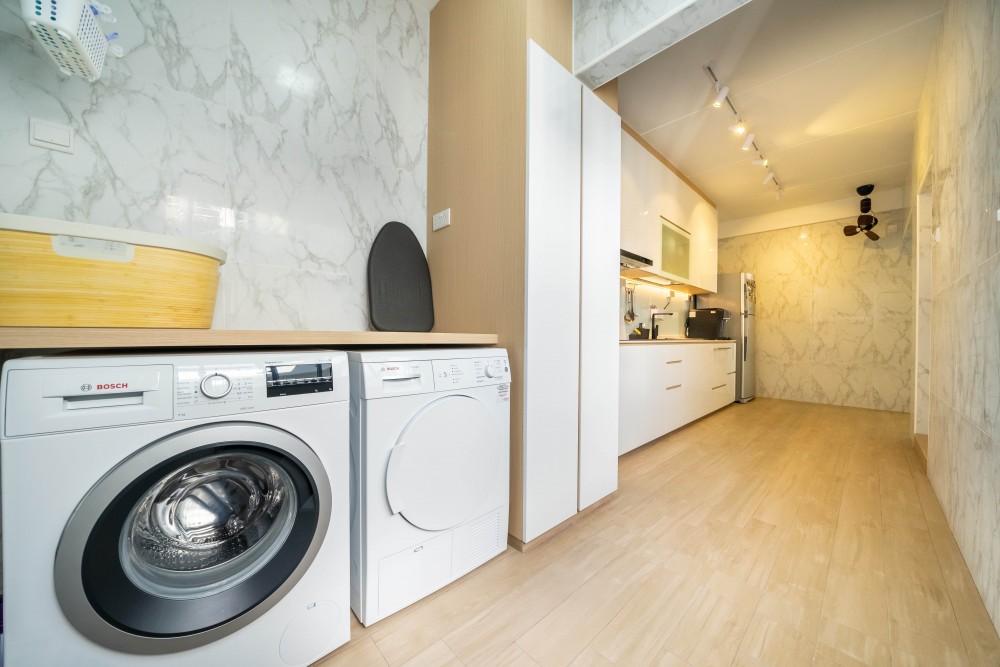

117B Rivervale Drive ($80,000) by Areana Creation Pte Ltd
Let’s talk about water usage first.
Dishwashers and washing machines both use a certain amount of water per cycle, regardless of how much you’ve loaded into them.
Running them only when they’re full means you’re making the most of that water usage, and not wasting any water on partially filled loads.
The same goes for energy usage.
In addition to water usage, appliances like dishwashers and washing machines also use a significant amount of energy to run.
When you run these appliances only when they’re full, again, you’re maximizing that energy usage and not wasting any energy on partially filled loads.
This translates into lower utility bills and a reduced carbon footprint.
Finally, running your appliances only when they’re full can also help to extend their lifespan.
This is because the appliances are designed to handle a full load of dishes or laundry, and running them with smaller loads can cause unnecessary wear and tear on the machines over time.
Using Eco-Friendly Materials And Products
The materials and products we use in our homes can have a big impact on the environment. By choosing eco-friendly materials, we can reduce our carbon footprint.
Here are some tips to choose eco-friendly materials and products:
- Use sustainable building materials and furniture
- Use locally sourced materials and furniture
- Buy second-hand furniture
Use sustainable building materials and furniture
When renovating or building your home, choose sustainable materials like bamboo, reclaimed wood, and recycled steel.


Obviously, doing this helps to lower the carbon footprint of your home. But that aside, there are many benefits of doing this.
Firstly, you get to enjoy improved indoor air quality.
Here’s the thing: many traditional building materials contain harmful chemicals or emit volatile organic compounds (VOCs) that can negatively affect indoor air quality.
Sustainable building materials, on the other hand, are often made from natural materials that do not contain these harmful chemicals, making for a healthier living environment.
Also, sustainable building materials are often designed to be more durable than traditional materials. This can help to extend the lifespan of your home and reduce the need for repairs and replacements over time.
Here are some sustainable material options that you may choose to use when constructing your home:
- Eco-friendly vinyl flooring: Some vinyl flooring options in Singapore are made from recycled materials or have a lower environmental impact. For example, there are vinyl flooring options that use less PVC or have a higher percentage of recycled materials. You can look for flooring brands that have eco-friendly certifications, such as the Singapore Green Label or the Global GreenTag.
- Bamboo flooring: Bamboo is a sustainable and renewable material that is becoming increasingly popular for flooring. It grows quickly and requires less water and pesticides than other types of wood. Bamboo flooring is durable, easy to clean, and has a natural, elegant look.
- Linoleum flooring: Linoleum is a natural, renewable material made from linseed oil, pine resin, and other natural materials. It is highly durable and comes in a range of colours and patterns. As a bonus, linoleum is coming back into trend, and it’s quickly becoming a popular flooring option!
- Eco-friendly wall paint: There are many brands of eco-friendly wall paint available in Singapore, such as Nippon Paint Odour-less, Dulux PureAir, and Jotun Majestic True Beauty. These paints are low-VOC (volatile organic compound), which means they emit fewer harmful chemicals into the air.
Once you’ve finished building your home, use the same strategy of looking for sustainable materials when you’re furnishing your home.
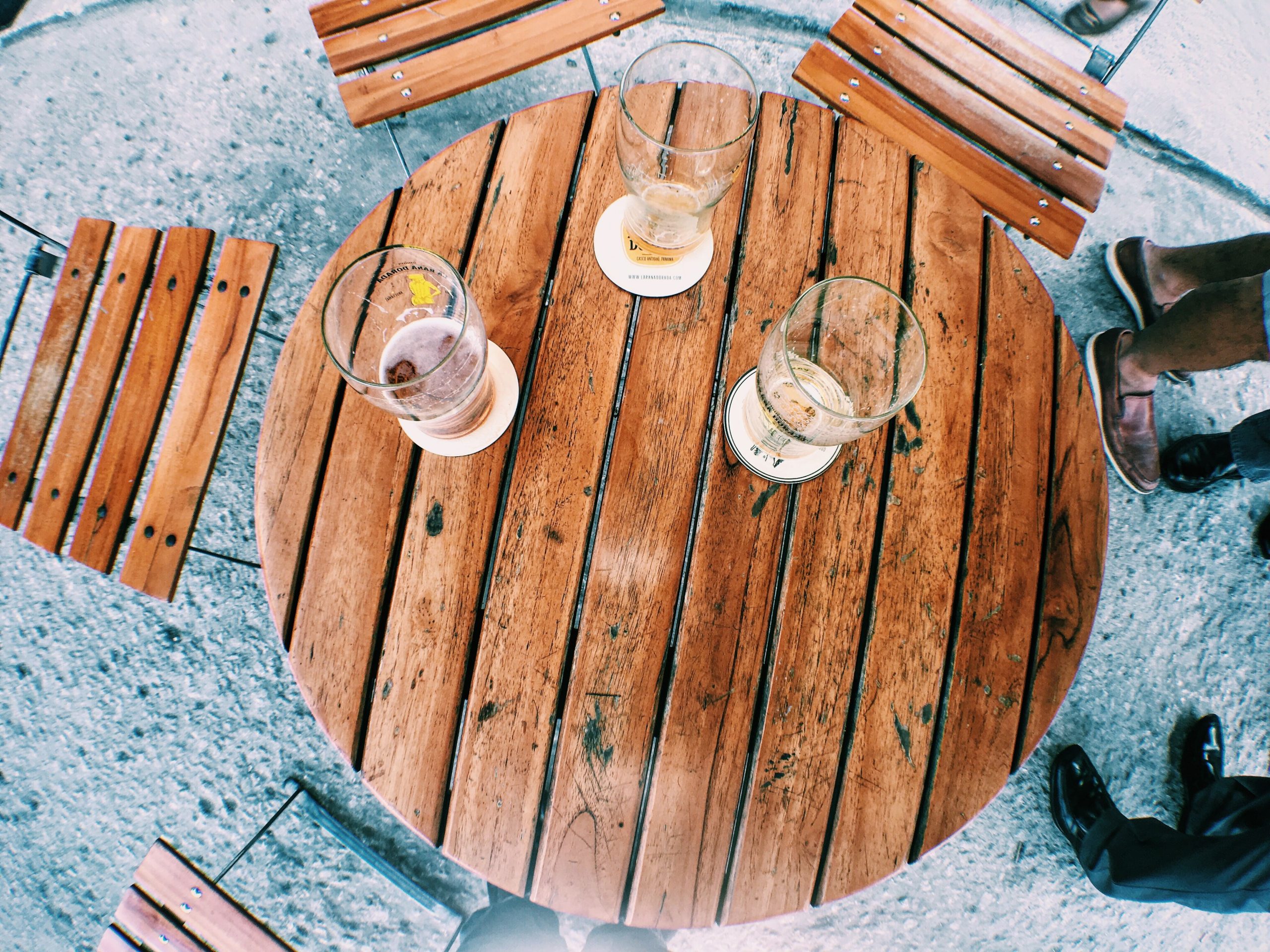

Here are some ideas:
- Reclaimed wood dining tables: These are dining tables made from reclaimed wood sourced from old buildings, boats, or other structures. They have a unique look and are often made by artisanal furniture makers.
- Rattan chairs and tables: Rattan is a natural, renewable material that is often used in outdoor furniture. It is lightweight, durable, and resistant to weather and pests.
- Bamboo furniture: Bamboo can be used to make a variety of furniture, including chairs, tables, and even beds. It is a fast-growing, renewable material that is strong and lightweight.
- Recycled plastic outdoor furniture: This type of furniture is made from recycled plastic and is often used for outdoor seating, dining, and lounging. It is durable and easy to clean.
- Upcycled furniture: Furniture made from upcycled materials can take many forms, such as coffee tables made from old pallets or chairs made from repurposed car parts. These pieces are often one-of-a-kind and can be a unique addition to any home.
Use locally sourced materials and furniture
When building your home, try to use locally sourced materials and furniture if possible.
This is one of the best things you can do for the environment, because it reduces the environmental impact of transportation.
Think about it: when materials are sourced from far away, they need to be transported to the building site, which requires energy and produces greenhouse gas emissions. By sourcing materials locally, you reduce transportation needs and associated emissions.
So instead of opting for the expensive imported tiles that are shipped all the way from Italy to Singapore, why not use locally-made tiles instead?
It’ll be better for the environment and for your wallet – it’s a win-win!
Buy second-hand furniture
Why buy second-hand? When you do this, you’re essentially giving a second life to items that might otherwise end up in landfills.
This helps to reduce the demand for new furniture production, which in turn helps to conserve natural resources and reduce energy usage and carbon emissions associated with manufacturing and transportation.
Now, there is a certain stigma about buying second-hand. You might be thinking – after all this time and energy I spent on renovating my new flat, I don’t want to buy someone else’s used furniture!
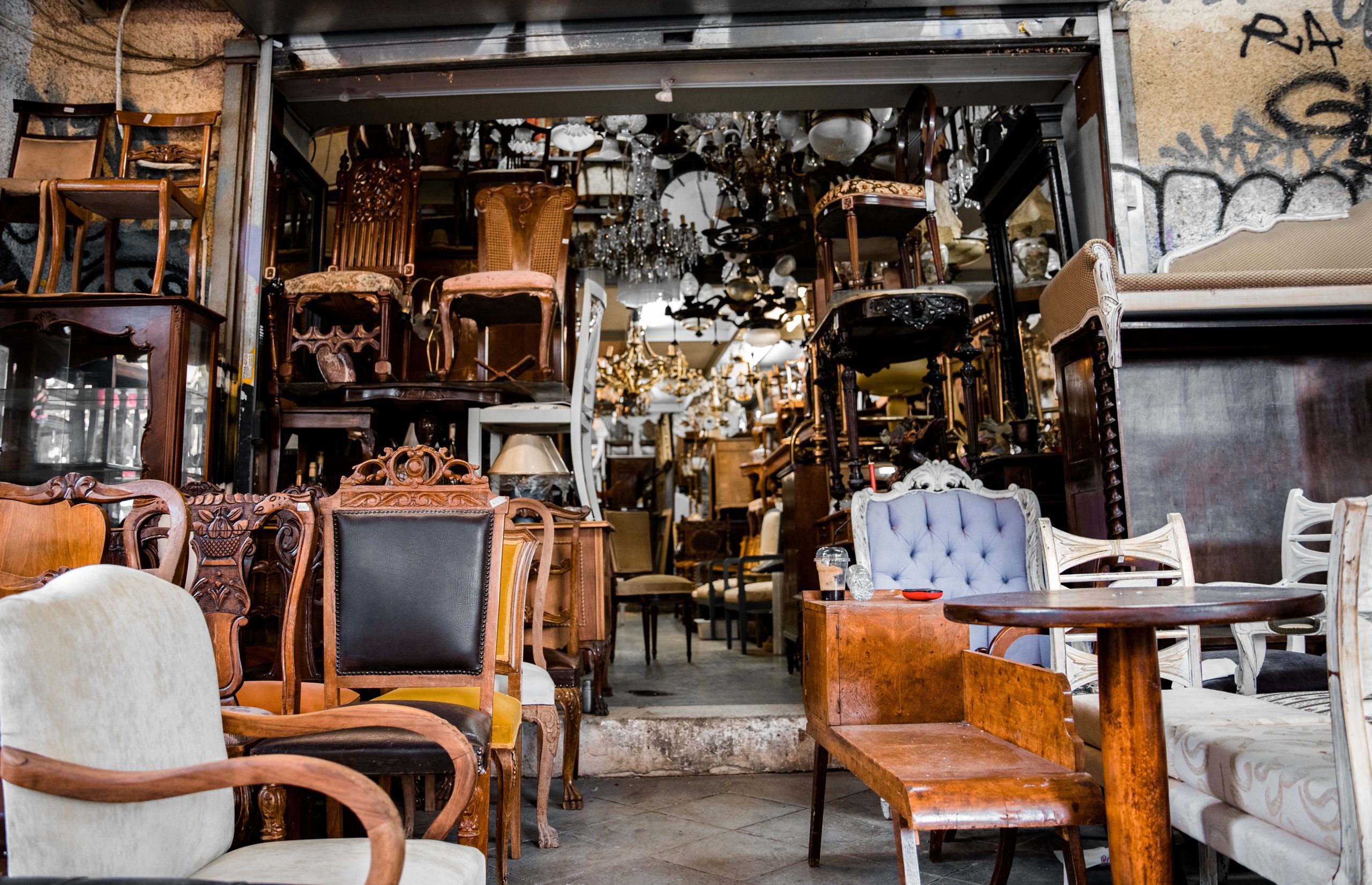

But here’s the thing – second-hand furniture doesn’t necessarily mean old and worn-out pieces.
In fact, many second-hand furniture items are in excellent condition (or brand new!) and can be found at a fraction of the cost of new ones.
You can find unique and vintage pieces that add character and charm to your home, and they may even be of higher quality than the cheaper, mass-produced items you would find in furniture stores.
Here’s a tip: if you’re on Carousell, filter using the “Brand new” or “Like new” options to find furniture that’s in great condition.
For those who want to shop for appliances, you can also find tons of BNIB (Brand New In Box) pieces on Carousell – these are 100% new and unopened.
Where do all these items come from? Well, some homeowners receive a lot of gifted appliances as housewarming presents, and they opt to sell these on Carousell.
There are also folks that get appliances or tools from credit card promotions (eg Dyson hair dryers and fans) and resell them on Carousell, completely brand new.
A Final Word On Making Your Home More Eco-Friendly
Making your home more eco-friendly isn’t just good for the planet – it’s good for you too!
By taking simple steps like switching to LED lights, maximizing natural light and ventilation, and choosing energy-efficient appliances and sustainable materials, you can reduce your environmental footprint and save money on your energy bills.
And by buying second-hand furniture and donating or recycling items you no longer need, you can help to reduce waste and conserve natural resources.
Here’s to saving the planet, one polar bear at a time 😉
Want to check out home renovation projects for more inspiration? Browse interior design ideas on Hometrust, or click the button below to get connected with expert designers!
Renovating soon? Let Hometrust recommend the best interior designers.
If you are reading this, you are probably wondering how you can create your dream home.
Here’s the thing, everyone’s needs and requirements for their home renovation is different. A designer that may work for someone else, may not quite work for you.
At Hometrust, we’re here to help match top rated designers, recommended by past homeowners to you through our data-driven and matching algorithm.
Whether you are looking for partial renovation or a full fledge overhaul, we’ll be able to recommend you top designers to match your renovation requirements and lifestyle.
Recommendations and free and you can simply start by helping us understand your needs below!
Get RecommendationsRenovate safe!
The Hometrust Team


